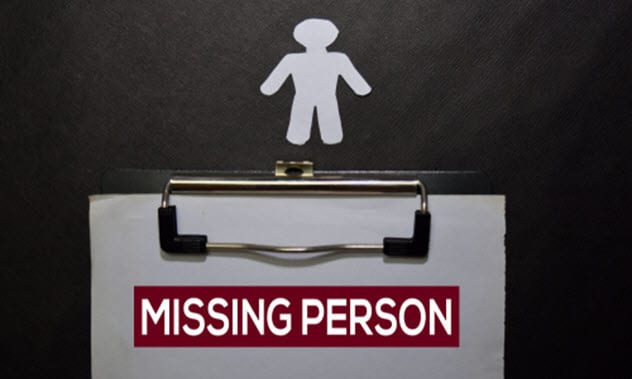 Our World
Our World  Our World
Our World  Weird Stuff
Weird Stuff 10 Fascinating Facts You Might Not Know About Snow
 Miscellaneous
Miscellaneous Top 10 Things Crypto Was Supposed to Change & What Actually Did
 History
History 10 Huge Historical Events That Happened on Christmas Eve
 Music
Music 10 Surprising Origin Stories of Your Favorite Holiday Songs
 History
History 10 Less Than Jolly Events That Occurred on December 25
 Weird Stuff
Weird Stuff 10 Funny Ways That Researchers Overthink Christmas
 Politics
Politics 10 Political Scandals That Sent Crowds Into the Streets
 Weird Stuff
Weird Stuff Ten Bizarre Facts About The Doge Meme
 Our World
Our World 10 Ways Your Christmas Tree Is More Lit Than You Think
 Our World
Our World 10 Archaeological Discoveries of 2025 That Refined History
 Weird Stuff
Weird Stuff 10 Fascinating Facts You Might Not Know About Snow
 Miscellaneous
Miscellaneous Top 10 Things Crypto Was Supposed to Change & What Actually Did
Who's Behind Listverse?

Jamie Frater
Head Editor
Jamie founded Listverse due to an insatiable desire to share fascinating, obscure, and bizarre facts. He has been a guest speaker on numerous national radio and television stations and is a five time published author.
More About Us History
History 10 Huge Historical Events That Happened on Christmas Eve
 Music
Music 10 Surprising Origin Stories of Your Favorite Holiday Songs
 History
History 10 Less Than Jolly Events That Occurred on December 25
 Weird Stuff
Weird Stuff 10 Funny Ways That Researchers Overthink Christmas
 Politics
Politics 10 Political Scandals That Sent Crowds Into the Streets
 Weird Stuff
Weird Stuff Ten Bizarre Facts About The Doge Meme
 Our World
Our World 10 Ways Your Christmas Tree Is More Lit Than You Think
Top 10 Dirty Secrets Of Dry Cleaning
I once spent the summer working at a dry cleaner’s, and what I witnessed there has stayed with me forever. Who knew that a process that mainly deals with the removal of bodily fluids could trigger such extremes in human behavior?
Maybe people feel vulnerable because they are actually airing their dirty laundry in public. Then again, what really happens in the steamy depths of the back room can seem mysterious.
Of course, most dry cleaners are honest businesspeople just trying to make a living. The industry has changed since my student days, but here are my recollections of being a dry cleaner. The incidents still make me shudder.
10 Secrets Businesses Don’t Want You To Know
10 The Sealed Bag

My first lesson was the sealed bag. A customer will arrive looking flustered and tell you they’re in a hurry. They quickly leave their details and head out the door after dropping a plastic sack onto the counter. The sack is always tied or sealed shut.
The first time this happened to me was the worst. I had no fear and wore no gloves as I opened the bag and unleashed a pulsating petri dish of human DNA. This is usually a combination of vomit, urine, clothing, and bedsheets.[1]
By the time you realize what you’ve received, the customer is probably driving home, safe in the knowledge that someone else is now dealing with their problem. If you are wise, you will only let this happen to you once.
9 The Guilty Secret Stain

The next type of customer is the owner of the “guilty secret” stain. Their approach is overly friendly and warm. They will engage you in conversation, ask about your day, throw their clothes on the counter, and then casually inquire:
“Hey, umm . . . not sure what this stain is. Do you think you can remove it?”
A painful silence hangs in the air. The customer needs you to erase all traces of their misbehavior. As for the mystery stain, remember the dress that Monica Lewinsky didn’t get dry-cleaned? It’s often along those lines, although it can be lipstick marks, perfume, or even cigarette smoke that the customer needs you to deal with discreetly.[2]
Dry cleaners have seen it all, and they may even be keeping a few guilty secrets of their own. Before cleaning, we check all the pockets in clothes. Alongside the breath mints and crumpled receipts, you can find a surprising amount of loose change.
We’re fine with keeping your secrets.
8 Criminal Evidence

On a more sinister note, there were occasions when I probably destroyed crime scene evidence. I always remember when a twitchy guy who barely spoke came into the shop. He darted out the door after dropping off a set of overalls caked with thick mud and fresh blood splatter.
My boss took one look and calmly told me to brush off the mud before putting the overalls in the machine. Of course, there was probably a perfectly rational explanation for this. But at the time, it struck me that homicide detectives rarely interview dry cleaners. Maybe they should.[3]
7 Stain Braggers

Much more fun are the stain braggers. I’ve had customers tell me the exact vintage of the red wine stain on their tie and await my reaction. One customer believed I should know that it was a splash of borscht from a famous gourmet restaurant on his shirt.
A minimum wage employee has no thoughts on this. They are just food stains. Although it does help your dry cleaner if you can identify the stain, we really don’t need to know how much it cost you.[4]
Interestingly, the most difficult stain to shift isn’t caused by food at all. It’s good old-fashioned ink. And there are some stains, mostly oil-based, that just can’t be removed.
6 Precious Owners

Precious clothes owners arrive cradling their item like a newborn. They issue specific instructions as to how their garment must be treated differently (with a delicate touch) and stored separately. It’s always best to smile and nod as they reluctantly let go of their prized piece like it’s a child on his first day of school.
The truth is, all the clothes go into one large machine together. So your darling garment will rub shoulders with a sweaty sports kit. All clothes are equal in the dry-cleaning world.
Precious people might also be shocked to learn that the solvent used to clean their clothes is a carcinogen called perchloroethylene (aka “perc”). This delightful substance is highly toxic to humans and the environment.[5]
Dry-cleaning staff who are constantly exposed to perc vapors can experience side effects such as dizziness, nausea, and skin irritation. Long-term exposure can lead to certain types of cancer as well as damage to the central nervous system. It certainly makes you think twice before you inhale the scent of your freshly dry-cleaned clothes.
Top 10 Dirty Little Secrets Of Telemarketers
5 Smoke And Mirrors

Running a dry-cleaning business isn’t cheap. There’s expensive machinery to maintain and a ton of overhead. This means they really have to get creative with their terminology and boost the popular myths surrounding the business.
For starters, the process isn’t dry at all. Your clothes will be still be drenched—but with toxic perc instead of water—and then thrown into the machine. The process cleans the surface of the clothes. But without water, it can’t soak deep enough into the fibers to shift those nasty sweat stains.
Now consider the constantly recycled wire hangers that may have been in and out of other customers’ wardrobes. Then there’s the cardboard liners for pressed pants that we sometimes fish out of the bin to reuse. When you break it all down, it’s a long way from the fresh scent of a spring meadow.[6]
4 Ugly Wedding Dresses

Every bride feels like a princess on her wedding day, but some of their dresses are truly hideous. Once your big day is over, you send your dream dress to the dry cleaners. If it is really ugly, bored employees will spot it and laugh. Sometimes, they will try it on and laugh some more.
The same applies to bridesmaids’ dresses and ball gowns. If you’re into historical reenactments or themed events, an employee has almost certainly slipped your costume on and may even have the photos to prove it.[7]
If you own a police uniform or a doctor’s whites, someone has probably pranced about in these items, too. It helps to pass the time and explains why the dry cleaner sometimes smirks when you pick up your clothes.
3 Nonreturners

Then there is the mystery of the nonreturners. For some reason, customers will drop off an item—which can sometimes be expensive or unique—and they never, ever return for it.
Some people forget about the article or lose their ticket. Other times, life gets too busy. The saddest legacy of the nonreturner is the “lonely wedding dress,” an unwelcome reminder to its owner of a broken marriage.[8]
State laws differ, but most specify that dry cleaners should keep unclaimed items for a maximum of six months. Then the dry cleaners are expected to contact the customer to inform the person that they will be disposing of that individual’s property.
The clothes are eventually donated to charity or a landfill (depending on their value). Once they have finally been off-loaded, it is a safe bet that the original owners will appear at the counter to demand the return of their ancient items. This is why each dry cleaner has a disclaimer tacked to their wall. They can silently point to the disclaimer as the customer begins to yell.
2 Lost Property

Dry cleaners are only human. From time to time, mistakes happen. Maybe a customer is given someone else’s garment and decides to keep it as it is much nicer than their own. Tickets can get switched and pinned to the wrong item. Clothing can be damaged by the harsh chemical process. When this happens, the customer is protected by law—but only so far.
According to the Fair Claims Guide published by the Drycleaning and Laundry Institute, the industry standard is to offer the current value of the item and not the original price paid. Generally, for an item that is one year old, you may receive 40 percent of its value. For an item over five years old, you may receive only 15 percent of what you paid.[9]
Some dry cleaners might not even admit liability. Instead, they prefer to shift the blame onto the manufacturer. It really pays to be nice to your dry cleaner.
1 The Worst

Here comes the worst part, the one that everyone secretly suspects. Sometimes, if the store has been really busy and the customer is waiting, we don’t clean your clothes at all. It’s amazing how a shot of steam and a pristine plastic cover can create the illusion of freshly cleaned clothes.
But don’t boycott your local dry cleaner just yet as they may not be there forever. Fast fashion and the popularity of casual office wear has left the industry struggling.[10] To all dry-cleaning customers everywhere, some of these may have happened to you. But maybe not. Support your local dry cleaner.
Top 10 Secrets Of Door-To-Door Salespeople
About The Author: I am an avid list writer and reader and a lover of words.








